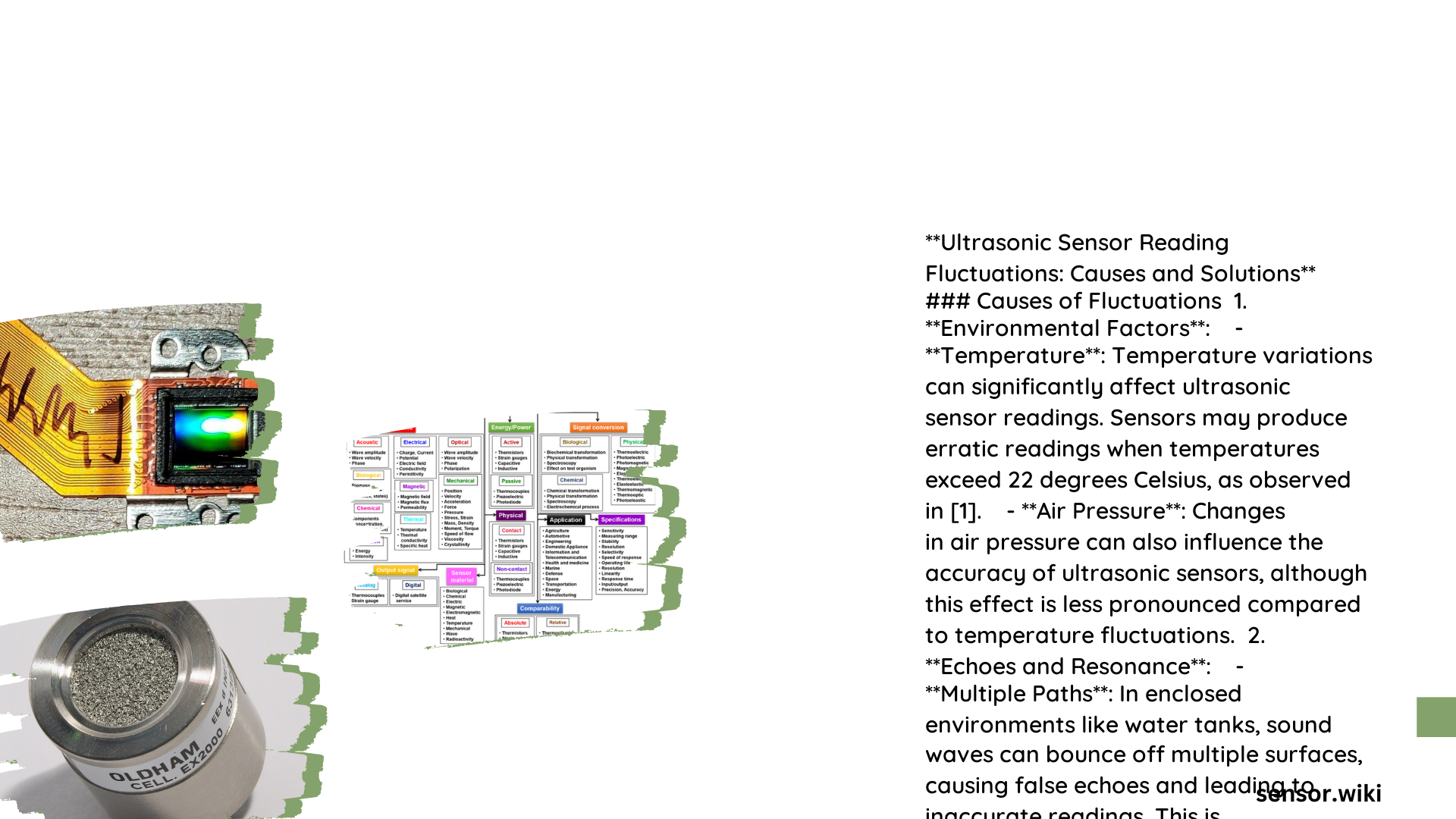Ultrasonic sensor reading fluctuations can significantly impact measurement accuracy in various applications. These fluctuations are primarily caused by environmental factors such as temperature variations, humidity levels, and surface characteristics of target objects. Understanding these causes and implementing appropriate solutions is crucial for maintaining reliable sensor performance. This article explores the primary causes of ultrasonic sensor reading fluctuations, accuracy issues related to distance measurement variability, noise interference sources, and effective calibration techniques.
What Are the Primary Causes of Ultrasonic Sensor Reading Fluctuations?
Temperature Variations
Temperature has the most significant impact on ultrasonic sensor accuracy. The speed of sound changes by approximately 0.17% for each degree Celsius change in temperature. This can lead to substantial measurement errors, especially over longer distances or in environments with wide temperature fluctuations.
- At 70°C: -8.5 cm error for a 100 cm measurement
- At -25°C: +7.65 cm error for a 100 cm measurement
- Even a ±1°C change can introduce noticeable errors
Humidity Levels
While humidity has a minimal effect at room temperature, it becomes more significant at higher temperatures:
- Low temperatures: 0.036% change in speed of sound per 10% RH change
- Higher temperatures: Increased humidity can increase the speed of sound due to the replacement of nitrogen and oxygen molecules with lighter water vapor molecules
Surface Characteristics of Target Objects
The texture and angle of the target object can significantly affect sensor readings:
- Soft or uneven surfaces: Can absorb or deflect sound waves
- Angled surfaces: May deflect sound waves away from the sensor
- Ideal surfaces: Flat and parallel to the sensor
How Do Accuracy Issues Relate to Distance Measurement Variability?

Maximum Range and Error Percentage
Ultrasonic sensor accuracy varies based on the maximum range:
- Standard sensors: Up to 10 meters range
- Advanced models: Up to 16.5 meters range
- Error percentage: Can be as high as ±8.5% for a 100 cm measurement without temperature compensation
Quantifiable Metrics
For a 100 cm measurement:
* Temperature change from room temperature to 70°C or -25°C: Up to ±8.5 cm error
* Error percentage: Approximately ±8.5%
What Are the Main Ultrasonic Sensor Noise Interference Sources?
Electrical Noise and Mechanical Vibrations
External noise can interfere with sensor readings:
- Sources: Compressed air jets, filling silos with stone
- Impact: Can cause malfunctions if the noise frequency matches the sensor frequency
- Sound pressure levels: Motion sensors can produce ultrasound over 81 dB (comparable to heavy traffic or a lawnmower)
Cross-Talk from Adjacent Sensors
While less common, cross-talk can occur:
- Mitigation: Use sensors operating at different frequencies
- Prevention: Ensure physical separation between sensors
How Can Effective Ultrasonic Sensor Calibration Be Achieved?
Procedures and Tools
- Temperature compensation:
- Example: Senix’s ToughSonic RTTC system for real-time temperature compensation
-
Benefit: Overcomes time lag inherent with built-in sensors
-
Calibration jigs and software:
- Purpose: Ensure accurate measurements
- Frequency: Some sensors calibrate upon start-up or before every range reading
Frequency of Calibration
Calibration frequency depends on the application environment:
- Stable temperatures: Weekly or monthly calibration
- Significant temperature fluctuations: Daily calibration may be necessary
Associated Costs
Calibration equipment costs can vary:
- Specialized calibration jigs: $50 – $200+
- Software: Varies based on complexity and precision required
By understanding these factors and implementing appropriate measures, engineers and technicians can minimize ultrasonic sensor reading fluctuations and maintain accurate measurements across various applications and environments.
References:
1. CK-12: What environmental conditions affect an ultrasonic sensor?
2. Senix: Ultrasonic Sensor Accuracy
3. MaxBotix: Ultrasonic Sensors: Advantages and Limitations
